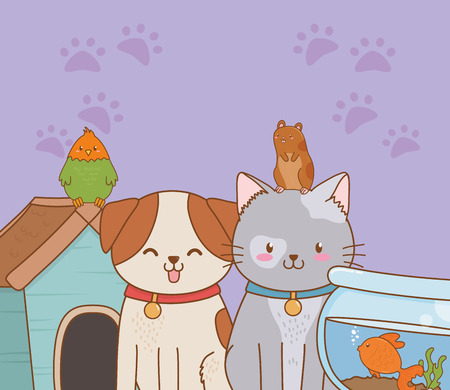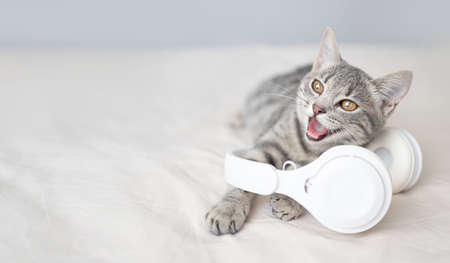Introduction: Cats and Their Love for Boxes
Across the United States, cat lovers are endlessly entertained by their feline friends’ fascination with cardboard boxes. Whether it’s a shoebox from an online delivery or a leftover package from the grocery store, cats seem magnetically drawn to these simple containers. This quirky behavior is more than just a funny internet trend—it’s a phenomenon that sparks curiosity among pet owners and animal experts alike. In American households, it’s common to find a box left out just for the family cat, often becoming their favorite nap spot. But what is it about boxes that make them so irresistible to our whiskered companions? Let’s explore why this endearing habit continues to charm cat lovers nationwide and uncover the scientific reasons behind cats’ love affair with boxes.
2. The Comfort of Enclosed Spaces
One of the most fascinating aspects of feline behavior is their irresistible attraction to boxes and other enclosed spaces. This love for small, cozy environments is deeply rooted in a cat’s natural instincts. In the wild, cats are both predators and prey, so seeking out confined spaces provides them with a sense of security. These hiding spots allow them to observe their surroundings without being easily seen or startled by potential threats.
Why Do Cats Feel Safe in Boxes?
Cats instinctively gravitate toward places where they can tuck themselves away. Boxes offer an ideal retreat because they help reduce anxiety by blocking out excess stimuli and giving cats control over their environment. When nestled inside a box, your cat feels less exposed and more protected—almost like having their own personal sanctuary. This comfort is especially important for indoor cats who may not have access to natural dens or hideouts.
The Benefits of Enclosed Spaces for Cats
| Benefit | Description |
|---|---|
| Security | Reduces stress by providing a safe place to retreat from perceived threats. |
| Warmth | Helps retain body heat, making it a cozy spot for relaxation. |
| Privacy | Offers solitude from household noise and activity. |
| Observation | Allows cats to watch their environment while remaining hidden. |
The Natural Instincts at Play
This preference for enclosed spaces isn’t just cute—it’s a survival tactic inherited from their wild ancestors. Whether it’s a cardboard box in your living room or a hollow log in the forest, these snug refuges give cats the confidence to rest and recharge, knowing they’re well-protected. By understanding this aspect of feline psychology, we can better appreciate why boxes are such an essential part of our cats’ lives—and why providing them with safe, comfortable hiding spots can support their overall health and well-being.

3. Stress Reduction and Security
Scientific research has shown that boxes play a crucial role in reducing stress for cats. In a study conducted at the University of Utrecht, shelter cats given access to hiding boxes showed significantly lower stress levels compared to those without. This is because boxes offer a safe retreat, where cats can observe their surroundings while remaining partially hidden. The enclosed space provides them with a sense of control over their environment, which is essential for their emotional well-being. Boxes serve as a buffer against overstimulation from noise or activity, making it easier for cats to relax and feel secure. For indoor cats especially, having access to boxes can help prevent anxiety-related behaviors by offering them a designated “safe zone.” So, when your cat curls up in a cardboard box, it’s not just adorable—it’s also an instinctive way for them to self-soothe and manage daily stress.
4. Temperature Regulation: The Science of Staying Warm
Cats are experts at finding cozy, comfortable places to rest, and cardboard boxes are particularly attractive due to their excellent temperature-regulating properties. Unlike open spaces or metal surfaces, cardboard acts as a natural insulator, helping cats maintain an ideal body temperature. This is especially important because domestic cats prefer environments between 86°F and 97°F (30°C–36°C)—much warmer than the average American home.
Cardboard traps heat from a cat’s body, creating a snug microclimate inside the box. This not only keeps them warm but also reduces drafts and outside noise, which can make your feline friend feel more secure and relaxed. The structure of cardboard—layers of paper with air pockets—minimizes heat loss and maximizes comfort.
| Surface/Material | Insulation Level | Cat Comfort Rating |
|---|---|---|
| Cardboard Box | High (Excellent Insulator) | ★★★★★ |
| Plastic Carrier | Low (Poor Insulator) | ★★☆☆☆ |
| Blanket on Floor | Moderate (Depends on Thickness) | ★★★☆☆ |
| Bare Floor (Tile/Wood) | Poor (No Insulation) | ★☆☆☆☆ |
This insulation effect makes boxes irresistible to cats, especially during colder months or in homes with air conditioning. By curling up inside a box, cats can conserve energy and remain comfortably warm without needing to seek out alternative heat sources. So, next time you spot your cat snuggled in a cardboard box, remember—they’re not just hiding; they’re taking advantage of nature’s own version of climate control!
5. Curiosity and Play Behaviors
Cats are famously curious creatures, and their playful instincts are at the heart of why boxes are so irresistible to them. From a young age, kittens learn about their world through play—sneaking, pouncing, and exploring are all vital skills that help develop their hunting abilities. In the wild, these behaviors are crucial for survival, allowing cats to hone their reflexes and practice stalking prey in a safe environment. A simple cardboard box offers endless opportunities for this kind of enrichment: it becomes a secret hideout for sneaking up on “prey,” a launchpad for surprise pounces, and a mysterious space to explore every nook and cranny.
For indoor cats, boxes serve as an ever-changing playground that stimulates both mind and body. The unpredictable nature of an empty box—how it shifts when they jump in or how shadows play across its interior—adds to the excitement. American pet owners often notice how quickly a cat will investigate any new box in the home, regardless of its size. This is because cats are naturally drawn to novel environments where they can satisfy their curiosity in a safe setting. Providing boxes isn’t just about entertainment; it’s also a way to encourage healthy activity and mental engagement, which are essential for feline well-being.
6. Behavioral Benefits for Indoor Cats
Providing boxes for indoor cats in American households goes beyond just offering a cozy place to nap—it plays a significant role in supporting their overall wellbeing and promoting natural feline behaviors. In the wild, cats rely on hiding spots to stalk prey or retreat from potential threats. For indoor cats, boxes serve as an important substitute, satisfying their instinctual need for security and territory. When you introduce a simple cardboard box into your living space, you’re giving your cat more than a plaything; you’re enriching their environment in meaningful ways.
Boxes help reduce boredom and stress by creating opportunities for exploration, play, and rest—all vital for a happy, healthy indoor cat. This environmental enrichment can prevent unwanted behaviors like excessive scratching or aggression, which sometimes arise when cats lack adequate mental and physical stimulation. Boxes also encourage positive interactions between cats in multi-pet homes, providing individual safe zones that help minimize conflict and promote harmony.
By recognizing the behavioral benefits of boxes, pet parents can easily enhance their cats’ quality of life with little cost or effort. Offering boxes not only supports your cat’s natural instincts but also strengthens the bond between you and your feline companion—making your home a more fulfilling and comfortable place for them to thrive.
7. Tips for Cat Owners: Providing Safe Box Spaces
Creating safe and enriching box environments for your cat can be both fun and beneficial, but it’s important to keep their health and safety in mind. Here are some practical tips for American cat owners on how to make the most of this simple yet effective enrichment tool:
Choose the Right Boxes
Select clean, sturdy boxes that are free from staples, tape, or sharp edges. Avoid using boxes that have contained chemicals, cleaning supplies, or foods with strong odors, as these can be harmful or off-putting to your cat.
Safety First: Placement Matters
Place boxes in low-traffic areas where your cat feels secure. Avoid high shelves or unstable surfaces to prevent falls or accidents. If you have children or other pets, choose spots where your cat can enjoy privacy and downtime.
Keep It Clean
Regularly inspect the boxes for signs of wear, moisture, or damage. Replace dirty or damaged boxes promptly to prevent mold growth or accidental ingestion of loose materials.
Size and Accessibility
Offer boxes that are large enough for your cat to comfortably turn around and curl up inside but small enough to provide a sense of coziness and security. Cut entry holes if necessary for easy access, especially for older cats or those with mobility issues.
Add Enrichment Safely
You can enhance your cat’s experience by adding a soft towel or blanket inside the box. Sprinkle a bit of catnip for extra excitement, but avoid small toys that could pose a choking hazard.
Supervision and Rotation
Rotate boxes every few weeks to keep things interesting and engaging for your cat. Always supervise initial interactions with new boxes to ensure there are no hazards and that your cat is comfortable.
Monitor Your Cat’s Health
If you notice any changes in your cat’s behavior—such as excessive hiding, reluctance to leave the box, or signs of illness—consult with your veterinarian. While boxes are great enrichment tools, they should support healthy behaviors rather than replace social interaction or activity.
By thoughtfully providing safe box spaces, you’ll encourage natural feline behaviors while supporting your cat’s physical and emotional well-being—all with an easy-to-find item that fits right into American homes!


